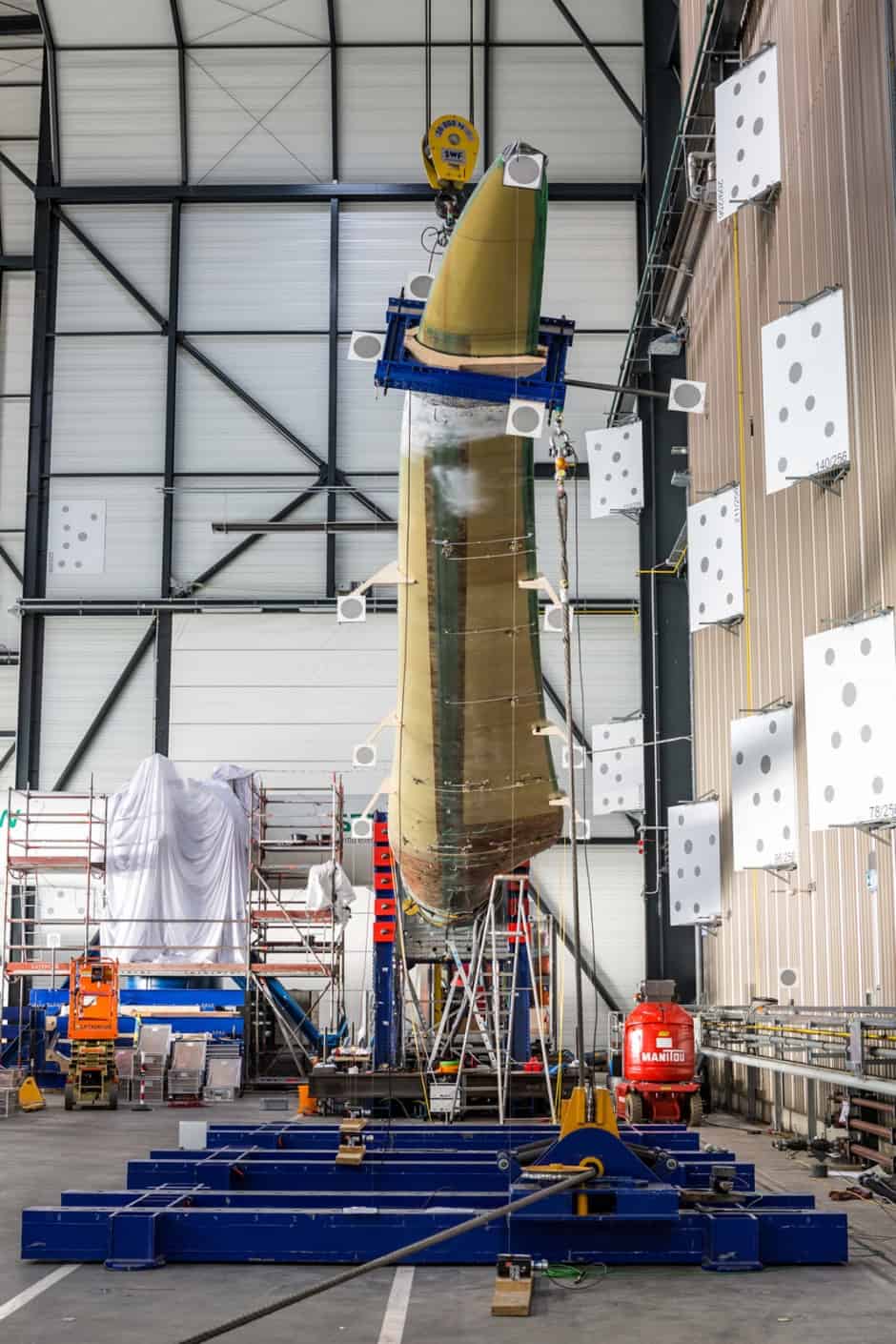Wind is rarely constant. It varies in strength and direction from moment to moment, and although wind turbines have some movement built into them, they cannot adapt quickly. The Fraunhofer Institute for Wind Energy Systems (IWES) in Bremerhaven has developed a turbine whose blades have a “bend-twist coupling” (BTC) that helps them react to changes in wind intensity in a moment.

A camera-reflector system detects any deformation three main axes of the rotor blade. Image: In
In a turbine whose blades are 85m long, the rotor sweeps out a circular area of 22,670m². Even within this area, wind strength can vary considerably. For example, the pressure acting on the blade that is pointing upwards can be very different from the pressures on the other two blades. If there is a gust when the wind is already strong, the only option the operators have to protect the blades from the sudden very strong force is to turn the rotor away from wind. This results in long downtime, even during windy conditions when no electricity is being produced.
The innovation behind the BTC blade allows it to rotate slightly along its own axis to take account of variations in wind pressure. Designed by a team at Fraunhofer IWES led by technology coordinator Elia Daniele and produced by project partner German Aerospace Centre (DLR), the prototype 20m long blades have a sweptback shape with the blade tip offset slightly to the rear in the direction of rotation.
As well as improving the efficiency of the rotor, it also allows the overall weight of the turbine to be reduced, as the structure will be subject to lower loads. Moreover, Fraunhofer IWES claims, retrofitting of BTC blades would allow rotor diameters to be increased with no need to adapt other turbine components; this results in an increase in revenue thanks to greater wind yield.
The blades are currently being subjected to bench tests in Bremerhaven to determine durability when subjected to extreme loads.
“Although the setup for the rotor blade torsion test is similar to the conventional scenario for static testing, it is in fact more complex, as the additional deformation has to be measured precisely,” said IWES test engineer Tobias Rissmann.
A visual measurement system monitors the deformation of the blade along the three main axes, while angle sensors confirm that force is maintained vertically to the blade axis. The bench tests also include fatigue testing, where the stresses incurred over the entire 20 year lifetime of rotor blade are simulated within a reduced time frame.
Once the bench tests are completed, IWES will ship three identical BTC blades to a test site at the foot of the Rocky Mountains in the US, where they will be installed on a research turbine by another project partner, the National Renewable Energy Laboratory. This will confirm whether the passive twisting action of the blade performs as expected. These tests will use two pressure sensors on the blade surface to measure flow dynamics, while the aerodynamic conditions around the blade will also be measured and exhilaration of the blade tips determined.
The IWES is planning to make its expertise in this field available to industrial partners rather than designing rotor blades itself. The project to develop the blades, known as SmartBlades2, was funded by a €15.4m grant from the German Federal Ministry of Economic Affairs and Energy.




Collaboration to address viable solutions for VAWG database
<blockquote>address the lack of standardisation, coordination, and collaboration of gender disaggregated data intelligence across various regions,...